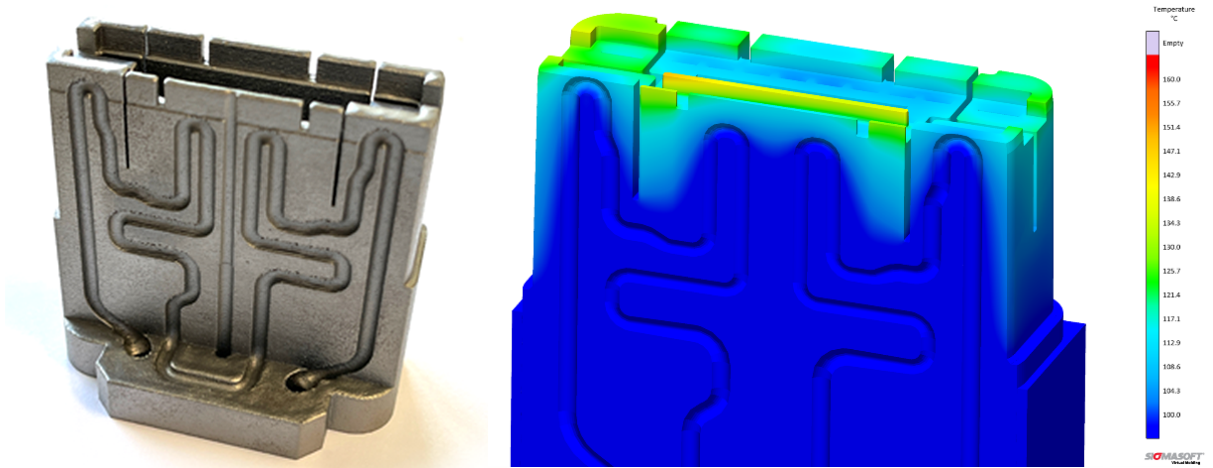Optimizing Cycle Time with Conformal Cooling
Optimizing Cycle Time with Conformal Cooling - Mold inserts from the 3D printer with optimal cooling - developed with simulation
A stable temperature in the mold is fundamental for a robust process and high component quality. At FAKUMA, SIGMA Engineering demonstrates the simulation-guided design of tempering systems using SIGMASOFT®. Using an example from /H&B/ ELECTRONIC, the optimized cooling channel manufactured by metal 3D printing is presented.
Aachen, September 19, 2023 – At FAKUMA in Friedrichshafen (October 17-21, 2023), SIGMA Engineering GmbH will present an example from /H&B/ ELECTRONIC created with SIGMASOFT® in Hall A5, Booth 5110. The project demonstrates how the development of conformal cooling for a connector housing is enabled and optimized through simulation.
Fundamentally, in injection molding, part quality and cycle time are significantly influenced by the thermal performance of the mold. Temperature variations lead to different cooling rates and result in residual stresses and warping in the finished part. Variations in wall thickness within the part are problematic as localized cooling requirements differ greatly. The goal is to keep temperature as homogeneous as possible, ensuring even heat dissipation. Here, conformal cooling is increasingly being utilized. Simulation allows for quantifying the advantages compared to conventional concepts (improved part quality, shorter cycle time, accurate prediction of hotspots, etc.) beforehand, in order to weigh them against additional costs.
Modern metal 3D printing allows almost free choice of shape for the mold inserts with integrated cooling – independent of the feasibility of milling, drilling, assembling, and sealing. /H&B/ ELECTRONIC has designed the simulation-based layout of this innovative 3D-printed tempering system using SIGMASOFT® and successfully implemented it into serial production.
"This is how it should always be... Thanks to the 3D-printed tempering system, it was possible to save costs and energy while simultaneously improving quality," says CTO Timo Gebauer about the project's success, adding, "We are always delighted when SIGMASOFT® enables innovations for our customers. In the case of H&B, even the significant investment in their own metal 3D printer was justified."

